
Renaissance - V
Il Sodoma
1477 – 1549
Il Sodoma (1477 – 14 February 1549) was the name given to the Italian Renaissance painter Giovanni Antonio Bazzi. Il Sodoma painted in a manner that superimposed the High Renaissance style of early 16th-century Rome onto the traditions of the provincial Sienese school; he spent the bulk of his professional life in Siena, with two periods in Rome.
Giovanni Bazzi was born in Vercelli, Piedmont, in 1477. His first master was the "archaic" Martino Spanzotti; he also appears to have been a student of the painter Giovenone. After acquiring the strong colouring and other distinctive stylistic features of the Lombard school and – though he is not known to have travelled to Milan – somehow absorbing the superficial mannerisms of Leonardo, he travelled to Siena before 1503, perhaps at the behest of agents of the Spannocchi family, and began with fresco cycles for Olivetan monks and a series of small Ovidian ceiling panels and a frieze depicting the career of Julius Caesar for Sigismondo Chigi at Palazzo Chigi.
Along with Pinturicchio, Sodoma was one of the first to practice in Siena the style of the High Renaissance. His first important works were frescoes in the Benedictine monastery of Monte Oliveto Maggiore, on the road from Siena to Rome, illustrating the life of St Benedict in continuation of the series that Luca Signorelli had begun in 1498. Gaining fluency in the prevailing popular style of Pinturicchio, Sodoma completed the set in 1502 and included a self-portrait with badgers and ravens.
Sodoma was invited to Rome in 1508 by the celebrated Sienese merchant Agostino Chigi and was employed there by Pope Julius II in the Stanza della Segnatura in the Vatican. He executed two great compositions and various ornaments and grotesques[6] in vaulted ceilings divided into feigned compartments in the antique manner that Pinturicchio had recently revived, working at the same time as Raphael. Giorgio Vasari's rhetorical story that Sodoma's larger works did not satisfy the pope, who engaged Raphael to substitute a program of Justice, Poetry, and Theology, is not borne out by the documents.
Before October 1510 he was in Siena, where he painted the exterior of Palazzo Chigi in monochrome chiaroscuro with scenes from the Bible and from Antiquity, the first such work seen in Siena.[9] His painting at this time began to show distinct Florentine influences,[10] especially of Fra Bartolommeo.
Called again to Rome by Chigi, in the Villa Chigi (now the Villa Farnesina), working alongside Baldassarre Peruzzi, Sodoma painted subjects from the life of Alexander the Great: Alexander in the Tent of Darius and the Nuptials of the Conqueror with Roxanne, which some people consider his masterpiece. When Leo X became pope (1513), Sodoma presented him with a picture of the Death of Lucretia (or of Cleopatra, according to some accounts). Leo gave him a large sum of money as a reward and created him a cavaliere.
In his youth, Bazzi had married, but he and his wife soon separated. A daughter married Bartolomeo Neroni, called also Riccio Sanese or Maestro Riccio, one of his principal pupils. Bazzi acquired his nickname of Il Sodoma, as it were "the sodomite", from as early as 1512. This appears to have been one among various nicknames, he was also known as Mattaccio or Matazo ("the madman") among the monks of Monte Oliveto. It is due to the contemporary art historian Giorgio Vasari that Bazzi's nickname of Il Sodoma has become conventional. According to Vasari's testimony, Bazzi always surrounded himself with "boys and beardless youths, whom he loved more than was decent", for which reason he acquired the nickname Il Soddoma. Still, according to Vasari, Bazzi took pride in the nickname and composed stanzas and songs about it.
Bazzi returned to Siena and, at a later date, sought work in Pisa, Volterra, and Lucca. From Lucca, he returned to Siena not long before his death on 14 February 1549 (older narratives say 1554). He had supposedly squandered his property and is said, without documentary support, to have died in penury in the great hospital of Siena. One of his pupils is known as Giomo del Sodoma.

Sodoma, Self-portrait, detail of fresco St Benedict repairs a Broken Colander through Prayer

Holy Family with young Saint John

St. Sebastian
(1525)

Ecstazy of Saint Catherine of Siena

Cupid in a Landscape,
c.1510
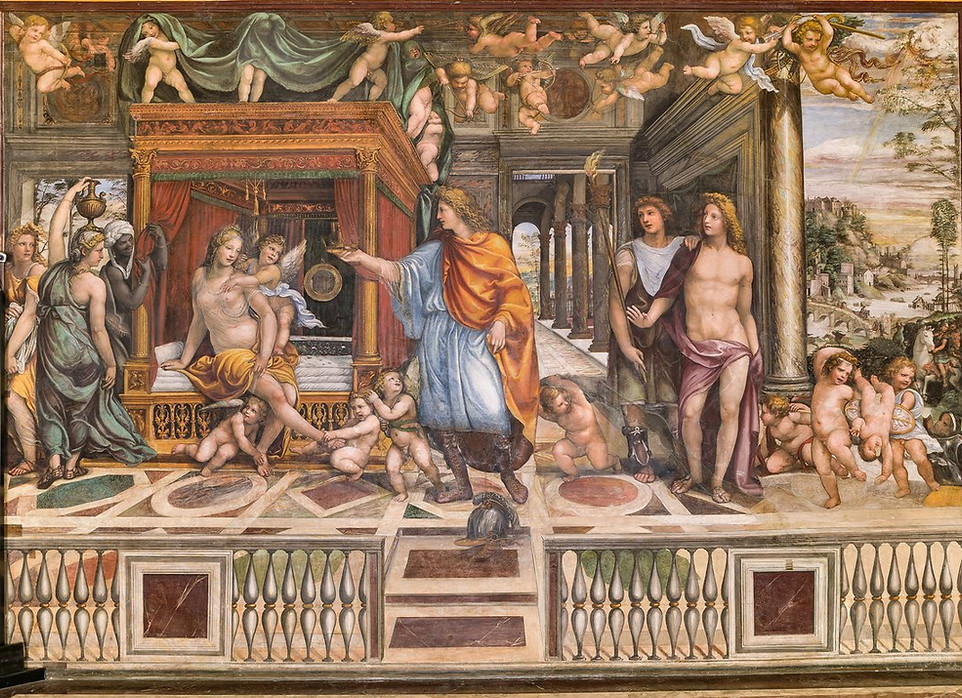
The Wedding of Alexander the Great and Roxane

The Wedding of Alexander the Great and Roxane (detail)

Deposition from the Cross
1510-13

The Death of Lucretia
1513

St George and the Dragon
about 1518

The Rape of the Sabine Women
1506-07

Allegory of Celestial Love
Giorgione
1477 – 1510
Giorgione (1477 – 17 September 1510) was an Italian painter of the Venetian school during the High Renaissance, who died in his thirties. He is known for the elusive poetic quality of his work, though only about six surviving paintings are firmly attributed to him.[4] The uncertainty surrounding the identity and meaning of his work has made Giorgione one of the most mysterious figures in European art.
Together with his younger contemporary Titian, he founded the Venetian school of Italian Renaissance painting, characterised by its use of colour and mood. The school is traditionally contrasted with Florentine painting, which relied on a more linear disegno-led style.
What little is known of Giorgione's life is given in Giorgio Vasari's Lives of the Most Excellent Painters, Sculptors, and Architects. He came from the small town of Castelfranco Veneto, 40 km inland from Venice. His name sometimes appears as Zorzo; the variant Giorgione (or Zorzon) may be translated "Big George". It is unclear how early in boyhood he went to Venice, but stylistic evidence supports the statement of Carlo Ridolfi that he served his apprenticeship there under Giovanni Bellini; there he settled and rose to prominence as a master.
Contemporary documents record that his talent was recognized early. In 1500, when he was in his twenties, he was chosen to paint portraits of the Doge Agostino Barbarigo and the condottiere Consalvo Ferrante. In 1504, he was commissioned to paint an altarpiece in memory of another condottiere, Matteo Costanzo, in the cathedral of his native town, Castelfranco. In 1507, he received, at the order of the Council of Ten, partial payment for a picture (subject unknown) in which he was engaged for the Hall of the Audience in the Doge's Palace. From 1507 to 1508 he was employed, with other artists of his generation, to decorate with frescoes the exterior of the newly rebuilt Fondaco dei Tedeschi (or German Merchants' Hall) at Venice, having already done similar work on the exterior of the Casa Soranzo, the Casa Grimani alli Servi and other Venetian palaces. Very little of this work now survives.
Vasari mentions his meeting with Leonardo da Vinci on the occasion of the Tuscan master's visit to Venice in 1500. All accounts agree in representing Giorgione as a person of distinguished and romantic charm, a great lover and a musician, given to express in his art the sensuous and imaginative grace, touched with poetic melancholy, of Venetian life of his time. They represent him further as having made in Venetian painting an advance analogous to that made in Tuscan painting by Leonardo more than twenty years before.
He was very closely associated with Titian; although Vasari says that Titian was Giorgione's disciple, Ridolfi says that they both were pupils of Giovanni Bellini and lived together in his home. They worked together on the Fondaco dei Tedeschi frescoes, and Titian finished at least some paintings of Giorgione after his death, although which ones remains controversial.
Giorgione also introduced a new range of subjects. Besides altarpieces and portraits he painted pictures that told no story, whether biblical or classical, or if they professed to tell a story, neglected the action and simply embodied in form and color moods of lyrical or romantic feeling, much as a musician might embody them in sounds. Innovating with the courage and felicity of genius, he had for a time an overwhelming influence on his contemporaries and immediate successors in the Venetian school, including Titian, Sebastiano del Piombo, Palma il Vecchio, il Cariani, Giulio Campagnola (and his brother), and even on his already eminent master, Giovanni Bellini. In the Venetian mainland, Giorgionismo strongly influenced Morto da Feltre, Domenico Capriolo, and Domenico Mancini.
Giorgione died of the plague then raging, on the 17th of September, 1510.

Self Portrait

Portrait of a Young Woman (Laura)
1506

The Reading Madonna

Tempest
c. 1505

Pastoral Concert (Fête champêtre)
1508-09
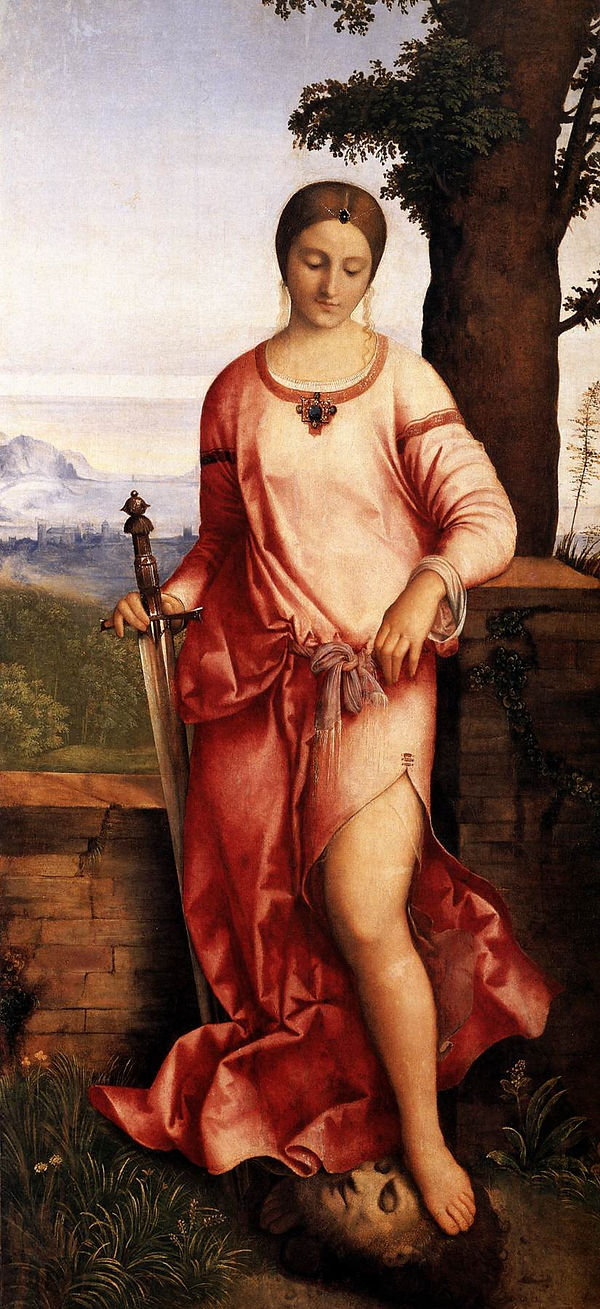
Judith
c. 1504

Sleeping Venus
c. 1510

The Three Philosophers

Old Woman
c. 1508

The Adoration of the Shepherds
1505-10
Jan Gossaert
c. 1478 – 1532
Jan Gossaert (c. 1478 – 1 October 1532) was a French-speaking painter from the Low Countries also known as Jan Mabuse (the name he adopted from his birthplace, Maubeuge) or Jennyn van Hennegouwe (Hainaut), as he called himself when he matriculated in the Guild of Saint Luke, at Antwerp, in 1503. He was one of the first painters of Dutch and Flemish Renaissance painting to visit Italy and Rome, which he did in 1508–09, and a leader of the style known as Romanism, which brought elements of Italian Renaissance painting to the north, sometimes with a rather awkward effect. He achieved fame across at least northern Europe, and painted religious subjects, including large altarpieces, but also portraits and mythological subjects, including some nudity.
From at least 1508 he was apparently continuously employed, or at least retained, by quasi-royal patrons, mostly members of the extended Habsburg family, heirs to the Valois Duchy of Burgundy. These were Philip of Burgundy, Adolf of Burgundy, Christian II of Denmark when in exile, and Mencía de Mendoza, Countess of Nassau, third wife of Henry III of Nassau-Breda.
He was a contemporary of Albrecht Dürer and the rather younger Lucas van Leyden, whom he knew, but he has tended to be less highly regarded in modern times than they were. Unlike them, he was not a printmaker, though his surviving drawings are very fine, and are preferred by some to his paintings.
His name was in fact "Jan Gossart", and he was so known in his lifetime; the Dutch version "Gossaert" crept into later sources, despite Gossart's first language being French. Little is known of his early life. One of his earliest biographers, Karel van Mander, claimed he was from a small town in Artois or Henegouwen (County of Hainaut) called Maubeuge or Maubuse. Other scholars have determined he was the son of a bookbinder who received his training at Maubeuge Abbey, while the RKD mentions there is evidence to support a claim that he was born in Duurstede Castle. He is registered in the Antwerp Guild of Saint Luke in 1503.
In 1508-9 he travelled to Rome, either in the company of, or later sent by, Philip of Burgundy, an illegitimate son of Duke Philip the Good, who was sent as ambassador to Pope Julius II by Philip the Handsome. Philip's party, very likely including Gossaert, left the Netherlands in October 1508, arrived in Rome on 14 January 1509, and was back at The Hague by 28 June 1509.[4] Although the details are unclear, it seems that Gossaert remained in Philip's employment until he died in 1524, by then Bishop of Utrecht. However, throughout this time he was able to work for other patrons, mostly friends of Philip.
In 1509–17 Gossaert was registered as a resident of Middelburg. According to Van Mander he was one of the first Flemish artists to bring back the Italian manner of painting with much nudity in historical allegories. From 1517 to 1524 he is registered at Duurstede Castle where according to the RKD, he had Jan van Scorel as pupil. From 1524 onwards he returned to Middelburg as court painter to Adolf of Burgundy, another Habsburg relative. Jan Mertens the Younger was another pupil.
He was a contemporary of Lucas van Leyden, and was influenced by artists who came before him, such as Rogier van der Weyden, the great master of Tournai and Brussels and, like him, his compositions were usually framed in architectural backgrounds.

Jan Gossaert-self portrait
(1515–1520)

Agony in the Garden
c. 1510
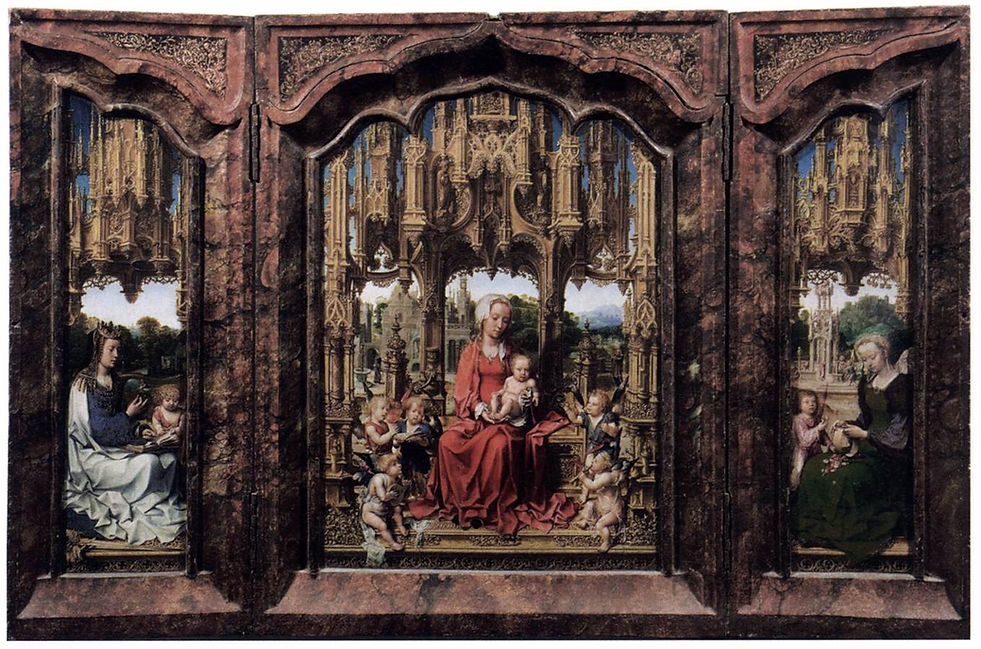
The Malvagna Triptych
1513-15
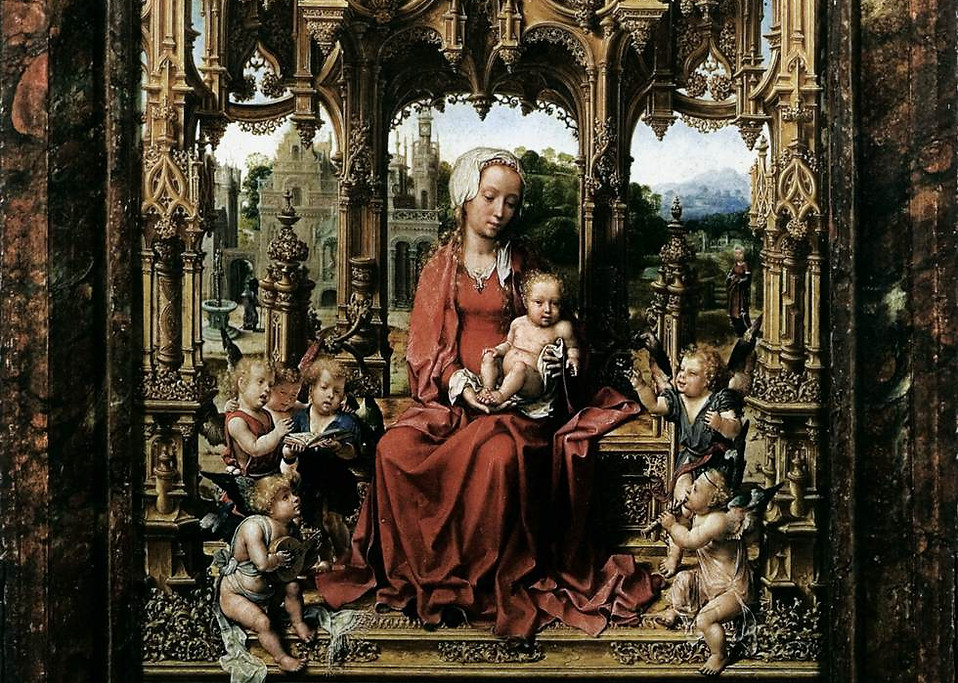
The Malvagna Altarpiece (centre panel)
1513-15

Carondelet Diptych
1517

The Norfolk Triptych (central panel)
1525-30

The Holy Family
c. 1510

Virgin and Child
c. 1520

Virgin and Child
c. 1527

Virgin and Child
1525-30

The Holy Family
1525-30

Virgin and Child
c. 1530
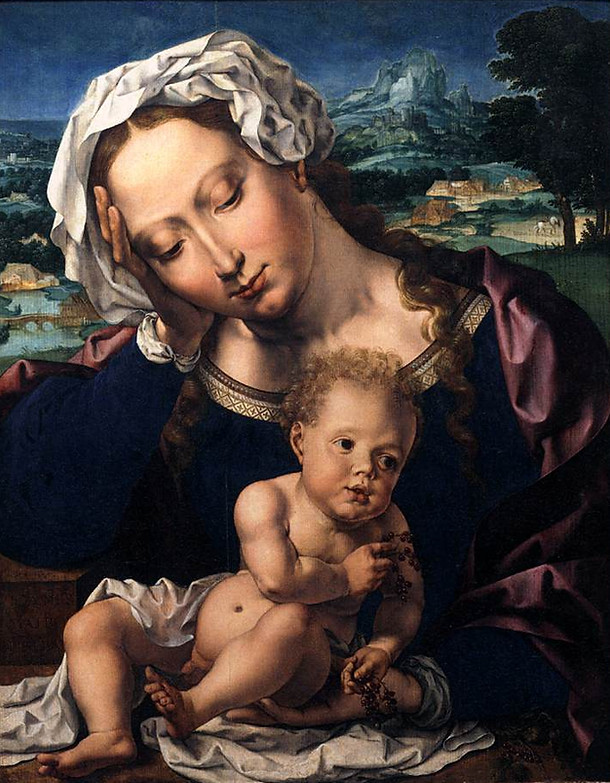
Virgin and Child in a Landscape
1531

Adam and Eve
c. 1520
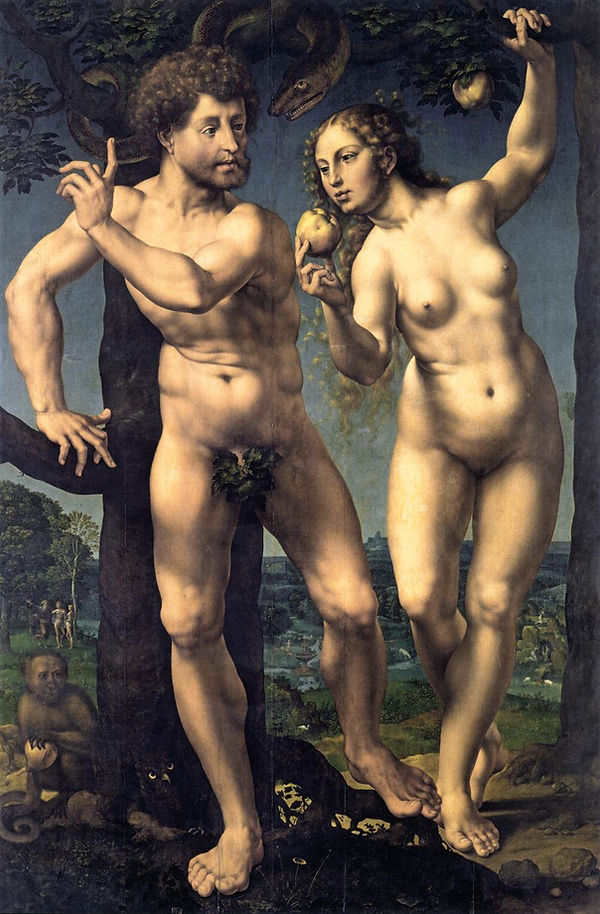
Adam and Eve
1525-30

Christ Carrying the Cross
1520-25

Neptune and Amphitrite
1516

Hercules and Deianira
1517

Venus
c. 1521
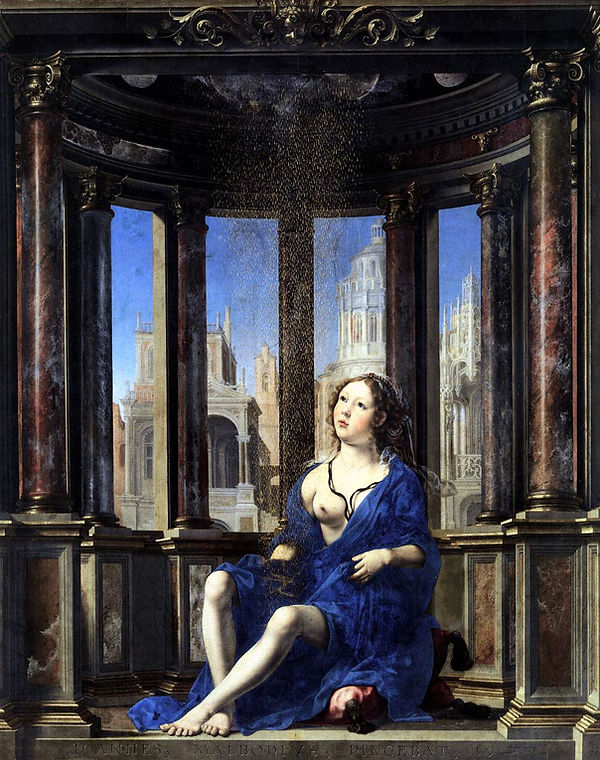
Danaë
1527

Portrait of a Woman
1520-25

Portrait of a Man
1528-30
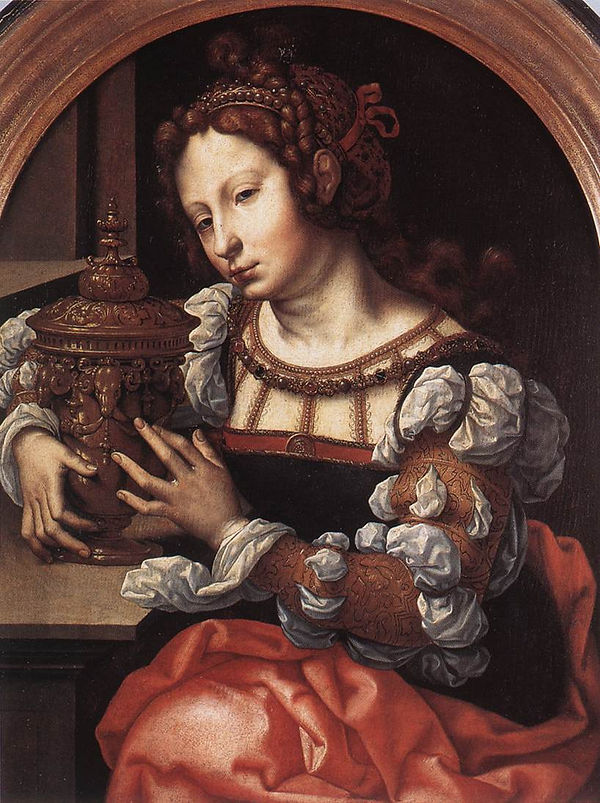
Lady Portrayed as Mary Magdalene
c. 1530

Adam Accuses Eve before God
1520-25

Hercules Killing Cacus
1520s

Hercules and Deineira
c. 1520

Cain Killing Abel
c. 1525

The Mocking of Christ or the Man of Sorrows
c. 1525

Hercules and Deianira
1530s
Joachim Patinir
1480 – 1524
Joachim Patinir, also called Patenier (c. 1480 – 5 October 1524), was a Flemish Renaissance painter of history and landscape subjects. He was Flemish, from the area of modern Wallonia, but worked in Antwerp, then the centre of the art market in the Low Countries. Patinir was a pioneer of landscape as an independent genre and he was the first Flemish painter to regard himself primarily as a landscape painter. He effectively invented the world landscape, a distinct style of panoramic northern Renaissance landscapes which is Patinir's important contribution to Western art. His work marks an important stage in the development of the representation of perspective in landscape painting.
Patinir was a friend of not only Dürer, but also of the leading Antwerp painter Quentin Metsys, with whom he often collaborated. The Temptation of St Anthony (Prado) was executed in collaboration with Metsys, who added the figures to Patinir's landscape. His career was nearly contemporary with that of Albrecht Altdorfer, the other major pioneer of paintings dominated by the landscape, who worked in a very different style. He may have been the uncle of Herri met de Bles, but there is not a single piece of contemporary evidence to support it. De Bles was probably only 14(?) when Patinir died, and his style was quite different, although both came from Dinant. The latter is the only fact connecting the two artists at the moment.
Originally from Dinant or Bouvignes in present-day Wallonia, Belgium, Patinir was registered as a member of Antwerp's Guild of Saint Luke in 1515. He lived and worked in Antwerp for the rest of his life. He may have initially studied in Bruges with Gerard David, who registered as a member of the Antwerp Guild in the same year as Patinir. In 1511, Patinir is believed to have travelled to Genoa with David and Adrien Ysenbrandt.
Patinir married first to Francisca Buyst, a daughter of the painter Edward Buyst of Dendermonde. After the death of his first wife he married Johanna Noyts, on 5 May 1521. Patinir's friend Albrecht Dürer attended his second wedding and painted his portrait. Dürer called Patinir "der gute Landschaftsmaler" ("the good landscape painter"), thus creating a new word for this type of painter. He had three daughters, two from the first marriage and one from the second. He operated a large workshop with assistants in Antwerp but he is not known to have registered any pupils with the Antwerp guild.
Patinir died in Antwerp in 1524. Quentin Metsys became the guardian of his daughters.


Baptism of Christ

Crossing the River Styx
1515-24

St Christopher Bearing the Christ Child

Landscape with the Flight into Egypt
c. 1524

Landscape with the Flight into Egypt

Landscape with the Flight into Egypt
1515-16

Landscape with the Rest on the Flight

Rest on the Flight to Egypt
c. 1520

Landscape with St John the Baptist Preaching

Rocky Landscape with Saint Jerome

St Jerome in the Desert
c. 1520

Landscape with St Jerome
1515-19

St Jerome in Rocky Landscape
c. 1520

Temptation of St Anthony
c. 1515

Landscape with Saint Christopher
c. 1520

Triptych
c. 1520
Palma Vecchio
c. 1480 – 1528

Palma Vecchio (c. 1480 – 30 July 1528), born Jacopo Palma, also known as Jacopo Negretti, was a Venetian painter of the Italian High Renaissance. He is called Palma Vecchio in English and Palma il Vecchio in Italian ("Palma the Elder") to distinguish him from Palma il Giovane ("Palma the Younger"), his great-nephew, who was also a painter.
Palma was born at Serina Alta near Bergamo, a dependency of the Republic of Venice, but his recorded career all took place in or near Venice. He is first recorded in Venice in 1510, but had probably already been there for some time. He was perhaps apprenticed to Andrea Previtali, who also came from Bergamo, and who returned there in 1511. Palma's earlier works show the influence of Giovanni Bellini, Previtali's master and by then the aged doyen of Venetian painting, but Palma came to follow the new style and subjects pioneered by Giorgione and Titian. After the deaths of Bellini and Giorgione, and the removal from Venice of Sebastiano del Piombo, Lorenzo Lotto and Previtali, before long Palma found himself, after Titian, the leading painter in Venice, much in demand until his early death at the age of 47 (according to Vasari; his date of birth is calculated from this). His stock has been rising somewhat in recent decades, as more attributions are removed from Giorgione and Titian and given to him; his "sheer painterly capacity" in the handling of paint and color is extremely fine.
He painted the new pastoral mythologies and half-length portraits, often of idealized beauties who, then as now, were enticingly suspected of being portraits of Venice's famous courtesans. He also painted religious pieces, in particular developing the sacra conversazione (the Virgin and Child with a group of saints and perhaps donors) in a horizontal form with a landscape background. In other, secular, groups something seems to occurring between the figures, though exactly what is unclear. All these types of painting were patronized by wealthy Venetians for their homes.

Virgin and Child, Saints Catharine and Celestine, John the Baptist and Barbara,
1520–22

Diana and Callisto, or Nymphs Bathing,
1525-28

Portrait of a Poet,
c. 1516

Young Woman in Profile,
c. 1512–1514
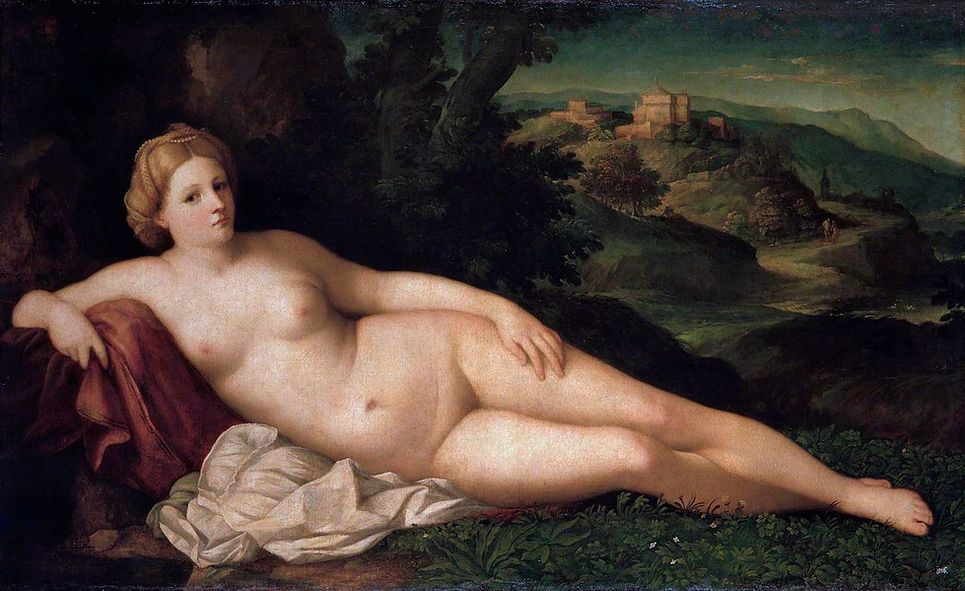
Nymph in a Landscape,
c. 1518–1520

Young Woman in a Blue Dress, with Fan,
1512–1514

Allegory,
1515

The Raising of Lazarus,
c. 1514

Sacra Conversazione,
1516–1518

La Bella,
1518–1520

A Blonde Woman,
c. 1520

Salvator Mundi,
c. 1518–1522

Portrait of a Courtesan,
1520

Madonna and Child with Saint John the Baptist and Mary Magdalene,
1520–1522

Madonna and Child with Donors

Woman with a breast uncovered,
1525

Judith,
1525–1528

Christ and the Woman Taken in Adultery,
1525–1528

Jacob and Rachel
1515-25

Madonna and Child
1515-16

Sacred Conversation
c. 1525

A Sibyl
c. 1520

Venus and Cupid in a Landscape
1515

Venus and Cupid'
1523

Venus and Cupid

Mars, Venus and Cupid
1520
Albrecht Altdorfer
c. 1480—1538
Albrecht Altdorfer (c. 1480—12 February 1538) was a German painter, engraver and architect of the Renaissance working in Regensburg, Bavaria. Along with Lucas Cranach the Elder and Wolf Huber he is regarded to be the main representative of the Danube School, setting biblical and historical subjects against landscape backgrounds of expressive colours. He is remarkable as one of the first artists to take an interest in landscape as an independent subject.[1] As an artist also making small intricate engravings he is seen to belong to the Nuremberg Little Masters.
Altdorfer was born in Regensburg or Altdorf around 1480.
He acquired an interest in art from his father, Ulrich Altdorfer, who was a painter and miniaturist. At the start of his career, he won public attention by creating small, intimate modestly scaled works in unconventional media and with eccentric subject matter. He settled in the free imperial city of Regensburg, a town located on the Danube River in 1505, eventually becoming the town architect and a town councillor. His first signed works date to c. 1506, including engravings and drawings such the Stygmata of St. Francis and St. Jerome. His models were niellos and copper engravings from the workshops of Jacopo de Barbari and Albrecht Dürer.
Around 1511 or earlier, he travelled down the river and south into the Alps, where the scenery moved him so deeply that he became the first landscape painter in the modern sense,[2] making him the leader of the Danube School, a circle that pioneered landscape as an independent genre, in southern Germany. From 1513 he was at the service of Maximilian I in Innsbruck, where he received several commissions from the imperial court. During the turmoil of the Protestant Reformation, he dedicated mostly to architecture; paintings of the period, showing his increasing attention to architecture, include the Nativity of the Virgin.
In 1529, he executed The Battle of Alexander at Issus for Duke William IV of Bavaria. In the 1520s he returned to Regensburg as a wealthy man, and became a member of the city's council. He was also responsible for the fortifications of Regensburg.
In that period his works are influenced by artists such as Giorgione and Lucas Cranach, as shown by his Crucifixion. In 1535, he was in Vienna. He died at Regensburg in 1538.

Albrecht Altdorfer

The Battle of Alexander
1529

The Battle of Alexander (detail)
1529

The Battle of Alexander (detail)
1529

The Battle of Alexander (detail)
1529

The Battle of Alexander (detail)
1529
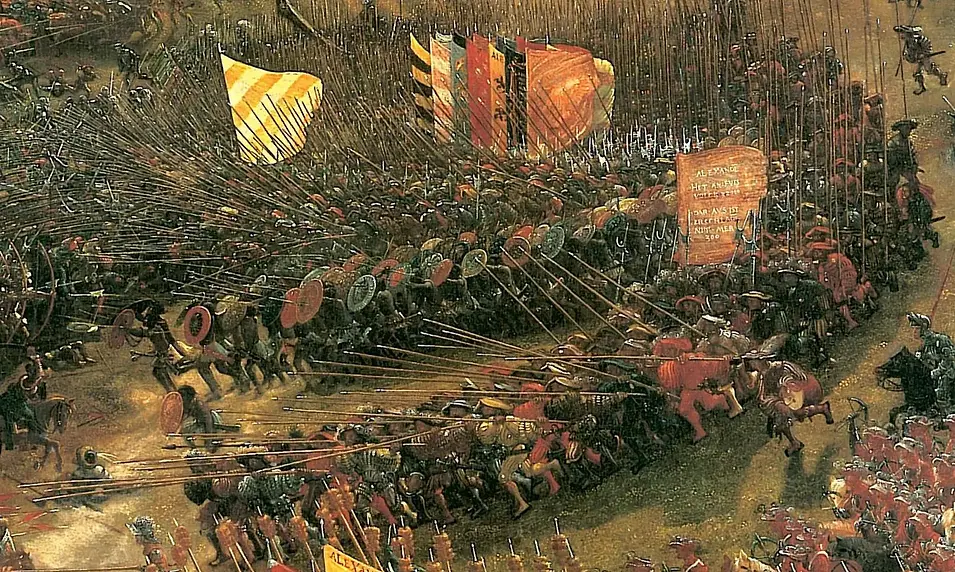
The Battle of Alexander (detail)
1529
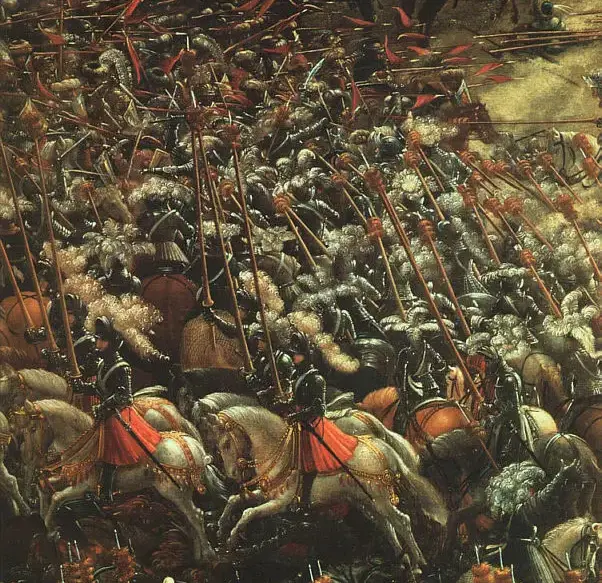
The Battle of Alexander (detail)
1529
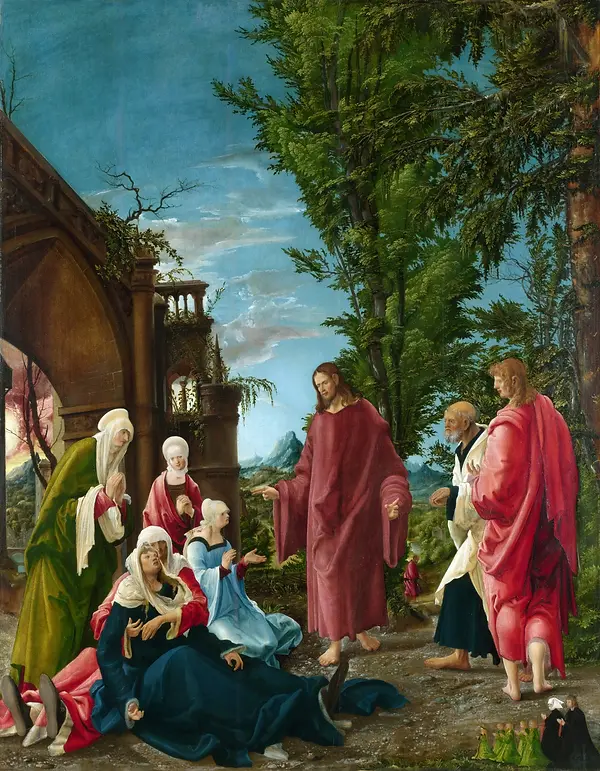
Christ Taking Leave of His Mother
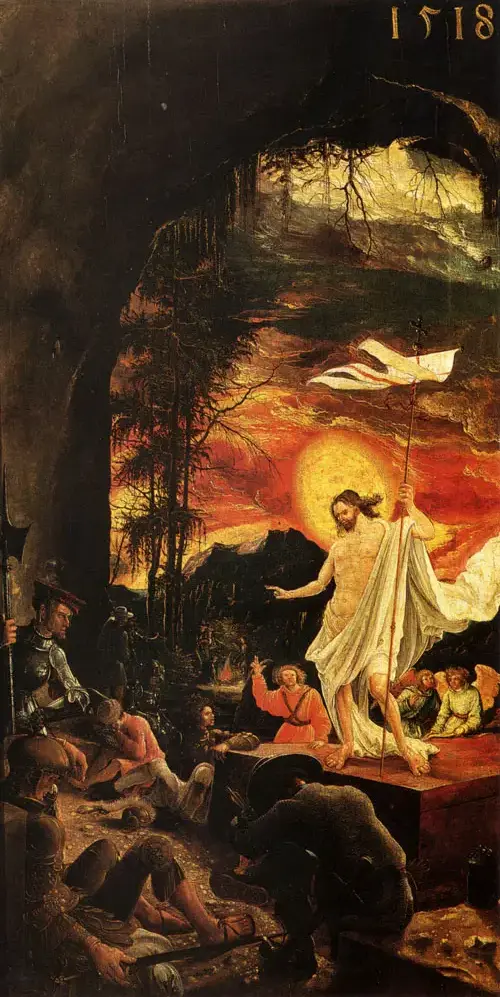
Resurrection of Christ
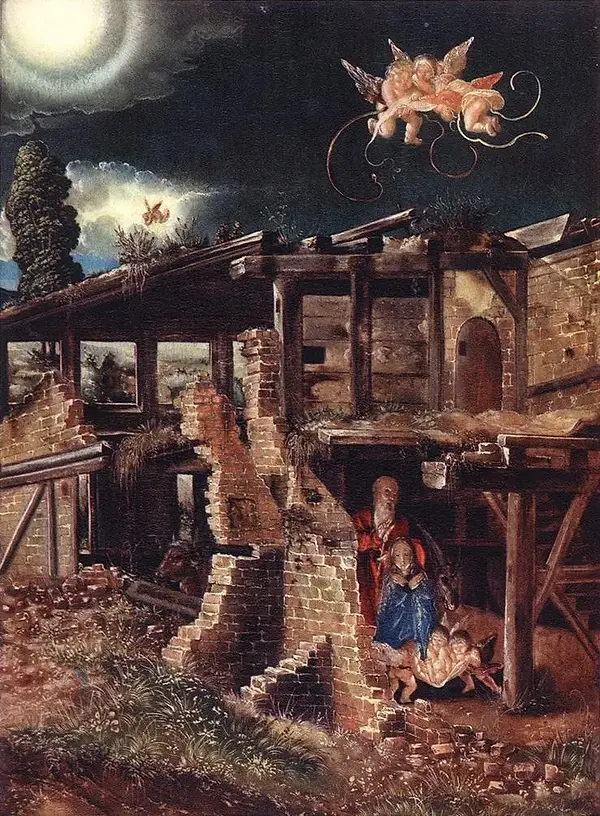
Holy Night (Nativity)

Nativity

Penitent St. Jerome
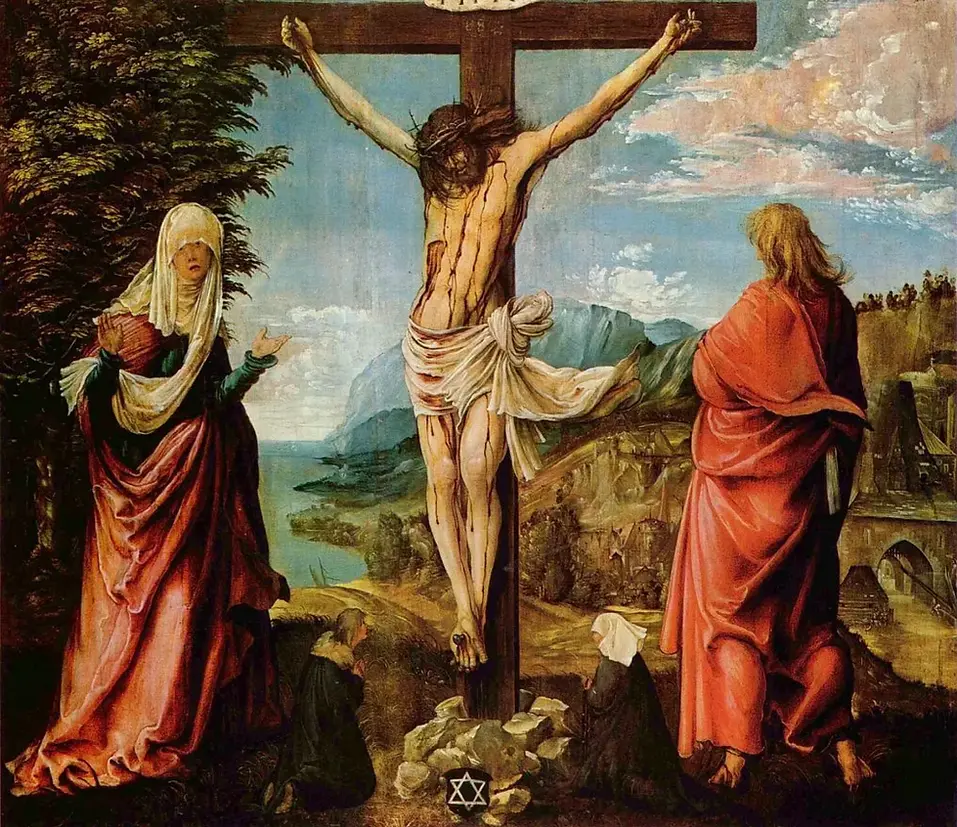
Crucifixion scene, Christ on the Cross with Mary and John
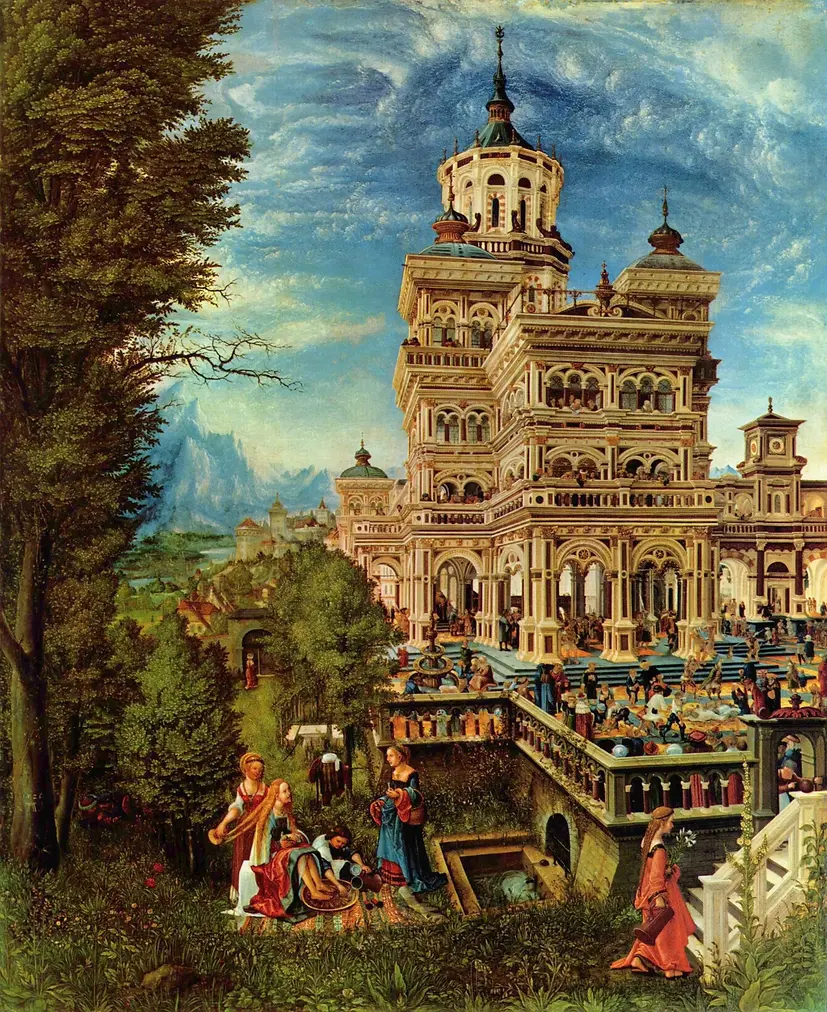
Susanna und die beiden Alten
1526

Landscape with Satyrfamilie

Albrecht Altdorfer

Albrecht Altdorfer

Crucifixion
